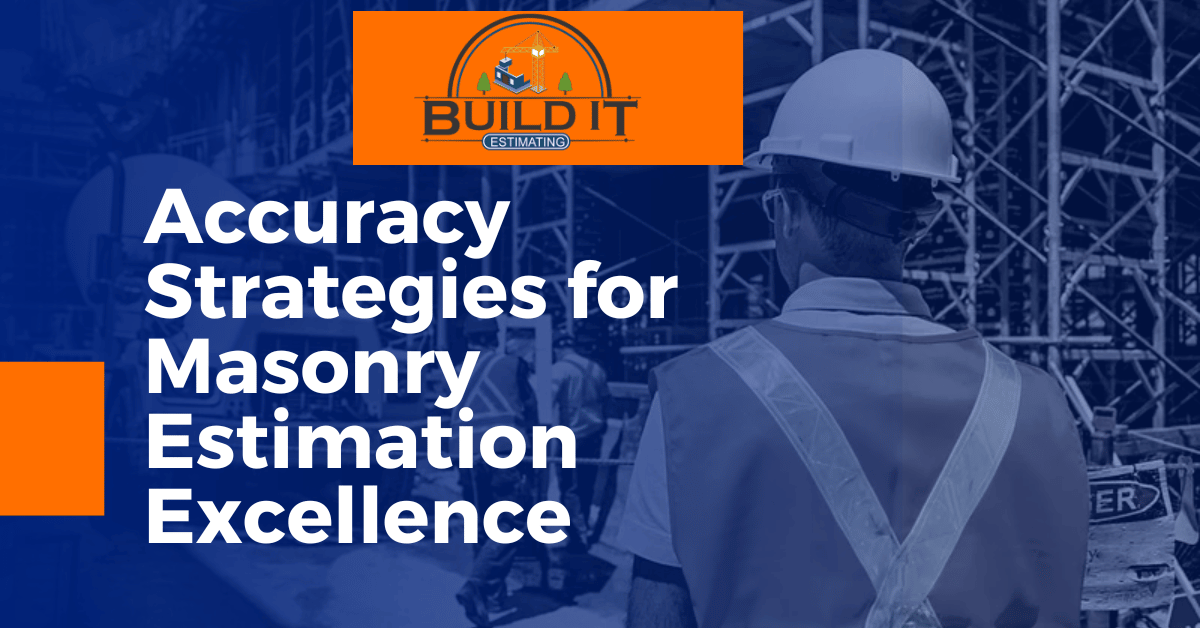Accurate estimates are the backbone of successful construction takeoffs, especially in today’s modern era where precision is paramount. Contractors and builders must navigate fluctuating material prices with strategic finesse to ensure their calculations are on point. A successful estimate not only covers costs but also leaves room for a margin of profit. Precise construction takeoff is essential to avoid the pitfalls of over-budgeting, which can lead to wasted time and materials.
Entering the construction industry demands either formal training or hands-on experience due to its inherent complexities. Individuals aspiring to succeed in this field must develop a profound understanding of construction processes, materials, and cost estimation techniques. This comprehensive knowledge equips them to navigate the intricacies of the industry effectively and excel in their roles as contractors, builders, or estimators.
A reputable Construction Takeoff Company places a high priority on its clients by delivering detailed and accurate cost estimates without any room for misunderstandings. Their professionalism and expertise ensure a precise understanding of all required materials, including type and quantity. Before initiating any work, estimators meticulously analyze every detail to ensure accuracy.
For instance, they leverage advanced estimating software like RSMeans to streamline the process. However, they understand that reliance on inaccurate data could result in over-budgeting and other complications. Therefore, they emphasize the importance of precise estimates to ensure projects stay within budget and are completed successfully.
During periods of inflation, seeking assistance from professionals becomes imperative, particularly in industries like construction where risks are heightened. Inaccurate estimates can lead to substantial budget overruns, making Construction Estimate Services indispensable for success. Estimators are adept at utilizing modern software and tools, which streamline the process and ensure the execution of successful construction takeoffs. By leveraging their expertise, businesses can mitigate risks and navigate inflationary pressures more effectively.
Who determines the project requirements?
Typically, contractors and subcontractors are tasked with determining material needs for construction projects. However, professionals such as estimators also play a vital role in this process. With their detailed knowledge of required materials and supplier specifications, including unit prices, estimators assist contractors in accurately estimating project costs.
Estimators are employed by both general contracting firms and construction companies, leveraging their extensive experience and expertise to provide precise estimates. Their role is critical in ensuring that projects are executed correctly and that budgets are managed effectively. For larger and more complex projects, companies may employ estimators specifically for construction takeoffs, with each estimator responsible for estimating different components of the project.
Types of Construction Takeoff
There are two types of Takeoff Construction. One is material takeoff and the other is quantity takeoff. Let us discuss what they are.
Material Takeoff
Material takeoff in construction is akin to creating a shopping list for your project. Just like you would list items like eggs and bread for grocery shopping, in construction, you list materials like concrete and steel. However, in construction, you also need to specify the size and type of materials required.
Estimators play a crucial role in this process. They study and analyze project plans meticulously, covering all details to determine exactly what materials are needed for the project. Material takeoff involves listing out all the materials required, specifying their sizes, types, quantities, and any other relevant details to ensure that the project runs smoothly and efficiently.
Quantity Takeoff
Quantity takeoff in construction involves determining not only the quantity of materials required but also their associated costs. Estimators focus on evaluating the cost of materials, labor, equipment, and other construction expenses. This phase provides a breakdown of material costs by analyzing their respective prices.
By conducting a thorough quantity takeoff, estimators gain a comprehensive understanding of the project’s overall cost. This critical phase allows them to accurately assess how much the project will cost, providing invaluable insights for budgeting and planning purposes in construction.
How to Plan a Successful Takeoff Construction
Review Plans
In the initial step of the estimation process, estimators thoroughly study project plans and specifications to determine the types and quantities of materials required. While this process can be time-consuming when done manually, top professionals leverage advanced software to streamline the review process.
With the use of advanced software, estimators can review project plans within a few days with confidence in the accuracy and quality of their analysis. Digital tools allow for the uploading of scanned copies of the plans, which are then analyzed by the software to generate detailed material quantity takeoffs efficiently and accurately. This technological advancement significantly enhances the speed and precision of the estimation process in construction projects.
Listing Materials
In the second step of the estimation process, the estimators compile a comprehensive list of all the required materials necessary for the job. These materials are essential for completing the entire project. Estimators invest time and attention to detail to accurately determine the quantity of each item needed.
Fortunately, modern tools have streamlined this process, making it more efficient and precise. The primary objective is to ensure that the construction takeoff is thorough and accurate.
Organizing the list of materials by size and type is crucial for clarity and efficiency. Categorization helps to streamline the estimation process and ensures that all necessary items are accounted for.
Additionally, estimators may seek guidance from senior colleagues or experts in the field to verify their calculations and ensure accuracy. This collaborative approach allows for any necessary adjustments to be made before proceeding to the next steps of the estimation process.
Measuring Components
This step is indeed critical for ensuring smooth project execution without any obstacles. Accurately measuring the size and dimensions of the project area is paramount for success. To illustrate this, consider a kitchen renovation project. Understanding the exact dimensions of the space allows for precise calculations of the materials needed, such as drywall, paint, or insulation.
Whether you are conducting measurements manually or digitally using advanced tools, precision is key. Even the slightest inaccuracies in measurements can lead to significant discrepancies in material quantities, potentially causing delays and cost overruns in the project.
Therefore, it is essential to take great care in measuring the size and dimensions of the project area to ensure that the construction takeoff is as accurate as possible. This attention to detail lays the foundation for a successful and efficient construction project.
Calculation of Quantities
Let’s begin from the outset! The process starts with analyzing blueprints and other relevant documents. Next, we determine the quantity of materials required for the project. For instance, if we’re building a wall, we measure the dimensions of the bricks to ascertain the necessary quantity. Then, we proceed to count the number of materials needed for construction.
Once we have the quantity, we multiply it by the size of each item to determine the total material required. This step allows us to calculate the price per unit accurately, which is crucial for an accurate construction takeoff. This meticulous approach ensures that every aspect of the project is accounted for, laying the groundwork for a successful construction endeavor.
Establish Cost
In the final step of the construction takeoff process, we calculate the total construction cost. By knowing the cost of each unit of material, we multiply this cost by the quantity needed for the project to determine the total cost. This comprehensive calculation provides us with a clear understanding of the overall project expenditure.
To optimize costs, there are several strategies that can be employed. Firstly, comparing prices from different suppliers allows us to select the most cost-effective option. Secondly, exploring potential discounts or promotions can further reduce expenses. Lastly, leveraging negotiation skills can help secure favorable pricing terms.
Once all calculations are complete, we compile our findings into a well-organized and presentable proposal. This proposal outlines the project’s scope, materials required, estimated costs, and any cost-saving strategies employed. Presenting our proposal in a clear and professional manner ensures transparency and facilitates effective communication with clients and stakeholders.
AT THE END
From planning to executing the construction projects. Follow all discussed steps and strategies. That will help you in generating accurate Takeoff Construction. Accuracy is the only main thing in the whole process. For that, make sure you are using digital tools. Nowadays the most famous ones are the cloud-based cost estimating software. Make sure you have it as your second hand. These tools act as the central point in which drawings are accessible easily. The main advantage is that no more human errors! Ultimately the whole process gets faster. Gives a reliable way to secure more projects.



